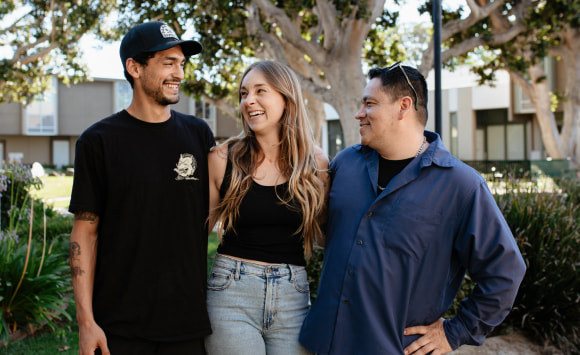Secure attachment style is one of the four main types of attachment that shape how we connect with others. It usually begins in childhood and plays a key role in how we handle emotions, build relationships, and trust ourselves and others.
With that in mind, how does secure attachment work, and can it help us heal, build trust, and form stronger relationships as adults?

Common Traits of a Securely Attached Individual
People with a secure attachment style are often easy to be around. They feel good about themselves and others, and they know how to build healthy relationships. Below are some common traits you’ll notice in securely attached adults:
- Comfort with closeness and independence – They enjoy being close to others but also feel fine doing things on their own.
- Emotional awareness and expression – They understand their feelings and can talk about them without feeling overwhelmed or ashamed.
- Strong communication skills – They know how to listen and speak honestly, which helps build trust in relationships.
- Stable and lasting relationships – Whether in romantic partnerships, friendships, or with family, they tend to form deep, meaningful bonds.
- Self-confidence and self-worth – They believe they are lovable and capable, which helps them face life’s challenges calmly.
- Respect for boundaries – They can say “no” and also respect when others do the same.
- Well-liked at work – Securely attached people often get along with coworkers, handle stress well, and lead with empathy.
If you’re a parent hoping to raise a securely attached child, it can help to look into your attachment history. Working through past issues, especially with the help of a therapist, can make a big difference in how you connect with your child.
How Secure Attachment Develops in Childhood
Secure attachment begins in childhood, usually when a child feels safe, loved, and understood by their main caregivers. When parents or guardians respond to a child’s needs with care and consistency, the child learns to trust others and themselves. This strong foundation often leads to better emotional health and relationships later in life.
A recent study looked at how attachment styles relate to mental well-being in adulthood. Here’s what the study found:
- The study included 393 Italian adults aged 18 to 62.
- Some people were in stable relationships, while others were single.
- They were asked questions about how they relate to others (attachment style) and how happy or emotionally healthy they felt (psychological well-being).
Key Findings
- People in stable close relationships felt better emotionally than people who were single.
- Singles were more likely to feel uncomfortable with closeness or believe relationships weren’t very important.
- Among singles, feeling confident in themselves helped boost well-being, while needing constant approval from others lowered it.
- Among people in relationships, those who needed a lot of approval also felt less emotionally well.
What This Means
- A secure attachment style, built early in life, helps people form stable relationships and feel good emotionally.
- Being in a close, healthy relationship can protect your emotional well-being—especially if you have a secure way of connecting with others.
- Learning to feel confident and not rely too much on others’ approval can also improve mental health.
Even if someone didn’t grow up with secure attachment, it’s never too late to work on building it.
How to Build a Secure Attachment as an Adult
You don’t have to be “born” with a secure attachment style to enjoy healthy relationships. New research shows that people can build a more secure attachment over time, and it might be easier than you think.
In a study from the Journal of Personality and Social Psychology, 70 couples took part in simple bonding activities. Here’s what happened:
- Some couples did intimacy-building exercises, like:
- Taking turns answering deep questions about themselves
- Doing partner yoga, where they touched or held hands to create poses
- Taking turns answering deep questions about themselves
- Others did less personal tasks, like answering neutral questions or doing yoga alone
People with avoidant attachment styles (those who usually pull away from closeness) started feeling better about their relationships after doing the connection-building activities. Their relationship satisfaction increased, and even a month later, they were less avoidant in how they related to their partners.
The activities that worked:
- Didn’t take much time
- Didn’t require therapy
- Were simple and even fun (like talking about personal topics, doing a shared activity, or remembering happy memories)
A Second Study Confirmed This
In another study with 67 couples:
- Each person kept a short daily journal for three weeks
- They wrote about how they felt and how their partner acted toward them
- When partners were kind, loving, or listened well, people:
- Felt better emotionally
- Rated their relationship higher
- Especially true for people who were usually more avoidant
- Felt better emotionally
How Can You Build Secure Attachment as an Adult?
You can start with small steps:
- Have honest conversations with people you trust
- Ask thoughtful questions and listen to the answers
- Try activities together (even just cooking or walking can help)
- Show care in small ways: kind words, a hug, or checking in
- Reflect on positive moments in your relationships
Over time, these actions can help you feel safer in close relationships, build trust, and even heal old patterns. You don’t need to change overnight, just keep showing up with openness and consistency.
The Role of Secure Attachment in Recovery
A large review of studies found that people with secure attachment are much less likely to develop substance use disorder later in life. One meta‑analysis showed that those with secure attachment had about a 30–40% lower risk of addiction compared to those with insecure attachment.1
Specific research among African American women with high stress factors found that greater secure attachment was linked to significantly lower odds of problematic drug or alcohol use.2
These findings show that secure attachment is more than just a relationship pattern; it’s a powerful protective factor for long-term emotional and physical health. By helping people feel safe, understood, and connected, secure attachment reduces the chances of turning to substances as a way to cope.
Secure Attachment Supports Getting and Staying in Treatment
People with a secure attachment style are often more open to getting help when they need it. That’s because they trust others, feel safe asking for support, and believe that relationships can be helpful, not hurtful.
A study found that people with a preoccupied or earned-secure attachment style were more likely to start and stay in treatment. They were willing to open up and work through their struggles. On the other hand, people with a dismissing style (those who tend to push others away or avoid closeness) often didn’t seek help at all. Their discomfort with trusting others made treatment harder to begin or stick with.3
In another study, seven people recovering from substance use shared that their therapists felt like safe, caring figures, similar to how a securely attached person might act. These therapists:
- Made them feel emotionally safe
- Built trust slowly
- Helped them see their worth
- Created space for new, healthier ways of thinking about relationships
This shows that even if someone didn’t grow up with secure attachment, therapy can help them build it over time.4
Healing Relationships Are Possible
Oceanrock Health and South Coast Counseling offer professional support with trained therapists who understand how attachment issues affect recovery. With the right kind of care, people can learn to trust again, form healthy bonds, and feel more confident in themselves. Healing isn’t just about stopping substance use; it’s also about building new patterns of connection that support long-term wellness.
Even if you’ve struggled with trust, love, or emotional safety in the past, recovery is possible. And with the help of skilled professionals, so is secure attachment.

Sources:
- Schindler, A. (2019). Attachment and Substance Use Disorders—Theoretical Models, Empirical Evidence, and Implications for Treatment. Frontiers in Psychiatry, 10(727). https://doi.org/10.3389/fpsyt.2019.00727
- Massey, S. H., Compton, M. T., & Kaslow, N. J. (2014). Attachment security and problematic substance use in low-income, suicidal, African American women. The American Journal on Addictions, 23(3), 294–299. https://doi.org/10.1111/j.1521-0391.2014.12104.x
- Caspers, K. M., Yucuis, R., Troutman, B., & Spinks, R. (2006). Attachment as an organizer of behavior: implications for substance abuse problems and willingness to seek treatment. Substance Abuse Treatment, Prevention, and Policy, 1(1). https://doi.org/10.1186/1747-597x-1-32
- Waters, K., Holttum, S., & Perrin, I. (2013). Narrative and attachment in the process of recovery from substance misuse. Psychology and Psychotherapy: Theory, Research and Practice, 87(2), 222–236. https://doi.org/10.1111/papt.12005







